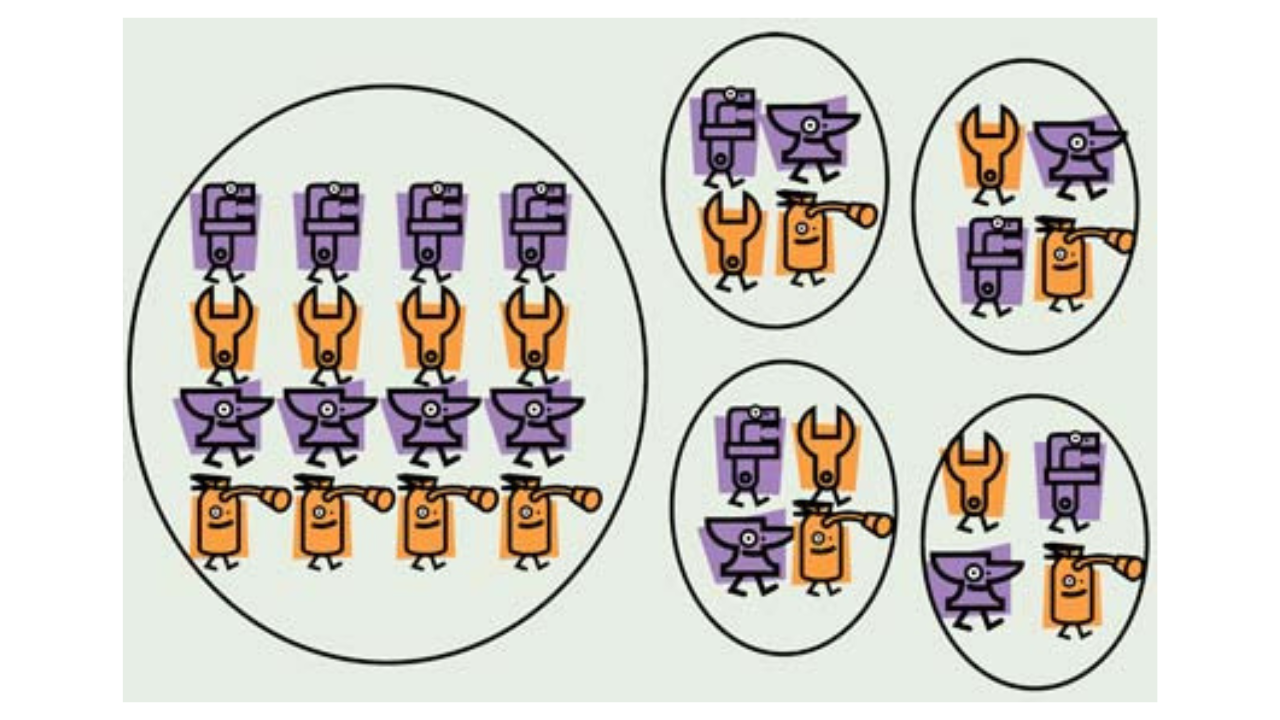Maintenance Planning and Scheduling Basics
Daryl Mather
Planning and Scheduling Basics
Planning and scheduling functions are the key deliverables of the planning role. This is where the most gains in execution have the potential to be made and acted upon. In some larger organisations these are split, allowing more adequate resources for each role.
The role of the planner needs to cover the full range of the work order system, from input into coding, prioritization and a degree of autonomy in execution. As such these roles, more and more, need to be staffed by skilled and versatile people.
The difference between planning and scheduling needs to be clear within each company. These are differing areas worthy of differing measurement and improvement initiatives.
Maintenance Planning
Planning can occur at any stage during the life of a works order. An electronic indicator in the work-order systems needs to be able to identify the work-order by status of planning. In this manner works orders requiring parts, procedures, documents, skills or equipment can easily be focussed upon. A work order cannot be considered planned until all of these have been considered. As well exception reporting needs to highlight:
- No resources
- No $ estimates
- Incorrect coding
At this point, only, does it become a “Planned” work-order. Not all require planning; this also needs to be included in any indication.
Maintenance Scheduling
Scheduling is the function of coordinating all of the logistical issues around the issues regarding the execution phase of the work. This can also uncover some areas of planning deficiency, which needs to be captured.
Scheduling is best performed in a capacity-scheduling manner, whereby the following takes place. Most modern systems have the capacity to output data to spreadsheets or similar. This is where the majority of scheduling work needs to occur.
- Overhead labour hours such as safety and toolbox meetings, break times and training times are to be gathered, along with holidays and scheduled as standing works orders for future analysis of these.
- Hours for PM completion to be deduced form data in the CMMS. This focuses on ensuring the equipment is maintained to its best levels.
- Addition of corrective and approved improvement actions as dictated by the prioritisation system and operations plan. These are to be Planned works orders only. A guide could be: Age of works orders against priority (As a measure of the priority systems effectiveness)
- The combination of corrective, preventative and improvement work needs to total the levels set for planned / scheduled work. Although this does constitute the most effective use of labour and resources, there are advantages to planned/unscheduled works. A workable level is 70%- 80% in the initial stages.
For example a planned works order may be used during opportune maintenance periods due to major failure or operations reasons. In this instance the benefits of pre-planning become clear. However there does not need to be a rush to repair equipment in an opportune manner simply because it has become available. If there have been higher priority work planned then this needs to retain that focus.
Review of this by week needs to focus on executed works. In this manner re-scheduled works, while important though difficult to fully quantify, can be captured in hour’s terms by omission. By setting a level of 70%, for example, you know that the schedule was forecast to that level. Planned / Scheduled work orders are to equal this.
Unplanned and unscheduled work makes up the majority of breakdown works orders generally. However modern systems do contain template work orders. Focusing of these on corrective actions can produce a “planned” breakdown work order.
Works order templates containing all planned information including parts and resources requirements. These can take a lot of the work out of the planning function so that it can be focussed more on improvement. Estimation variances, additional tips or instructions, improving the safe working practices and reviewing the stores re-credits can offer areas of improving work order templates. All delivering a more efficient and accurate tool for scheduling and execution.
Templates can also be used to store trouble shooting guides for specific symptoms / fault modes. OEM data and strategy review information is best for providing the detail for these.
Like all changes to maintenance processes this needs to be embedded via a range of initiatives. These include role-specific training, targeted reports for functional purposes and integration of KPI measurement with daily routines. This can happen as part of meeting structures, signs and symbols as well as integration with the salary expectations. (Usually via bonus schemes) Although effective, the behaviours being driven need to be carefully considered.
This is by no means a total explanation of the planning and scheduling function, reporting tools, and or processes. Remember this was just the planning and scheduling basics which will allow you to highlight areas most neglected where immediate improvements, through an application, can be easily implemented.
Daryl Mather
Related Articles
About 25% of a Planner’s time should be spent in the field, assessing and “scoping” maintenance work. To make this time as useful as possible, a good “planner’s tool kit” is essential. A good planner’s tool kit should contain the following items, all in convenient package, such as a light-weight tool belt. Or we like a safety vest with lots of pockets. And, of course, all the required personal safety equipment and a cell phone or pager. As Maintenance’s “information managers”, planners should be easy to contact.
About 25% of a Planner’s time should be spent in the field, assessing and “scoping” maintenance work. To make this time as useful as possible, a good “planner’s tool kit” is essential. A good planner’s tool kit should contain the following items, all in convenient package, such as a light-weight tool belt. Or we like a safety vest with lots of pockets. And, of course, all the required personal safety equipment and a cell phone or pager. As Maintenance’s “information managers”, planners should be easy to contact.
See More
"Listen: I’m a mechanic, not a clerk. Do you want me to do the work OR fill out these work orders? If I wasted all that time filling in those silly blanks on your paperwork I’d never get caught up! Besides, I don’t know why we need ‘em anyway. Let’s just do the work like we’ve always done.” Sound familiar? Maintenance work orders are often seen as an extra burden to the maintainers as well as those who are requesting the work to start with. “Paperwork. Needless paperwork. That’s all it really is anyway. I just want to call the mechanic and get this work done fast!” But without work order history, the maintenance organization is at risk and equipment problems will likely worsen.
"Listen: I’m a mechanic, not a clerk. Do you want me to do the work OR fill out these work orders? If I wasted all that time filling in those silly blanks on your paperwork I’d never get caught up! Besides, I don’t know why we need ‘em anyway. Let’s just do the work like we’ve always done.” Sound familiar? Maintenance work orders are often seen as an extra burden to the maintainers as well as those who are requesting the work to start with. “Paperwork. Needless paperwork. That’s all it really is anyway. I just want to call the mechanic and get this work done fast!” But without work order history, the maintenance organization is at risk and equipment problems will likely worsen.
See More
The work process we call maintenance planning can almost always be improved in any given mill or plant. In fact in most plants we visit maintenance planners don’t plan. Planners do all kinds of tasks except work order planning.
The work process we call maintenance planning can almost always be improved in any given mill or plant. In fact in most plants we visit maintenance planners don’t plan. Planners do all kinds of tasks except work order planning.
See More
Companies often ask if maintenance planning and scheduling will work if they have a decentralized maintenance organization. Yes, it will. In fact, they need planning and scheduling just as much as a centralized shop. Let's review why.
Companies often ask if maintenance planning and scheduling will work if they have a decentralized maintenance organization. Yes, it will. In fact, they need planning and scheduling just as much as a centralized shop. Let's review why.
See More
Planned maintenance is a maintenance concept developed over a span of time, and is made up of numerous functions, all designed to compliment each other. Planned maintenance, then, is a maintenance program designed to improve the effectiveness of maintenance through the use of systematic methods and plans. The primary objective of the maintenance effort is to keep equipment functioning in a safe and efficient manner. This allows production to meet production targets with minimum operating cost.
Planned maintenance is a maintenance concept developed over a span of time, and is made up of numerous functions, all designed to compliment each other. Planned maintenance, then, is a maintenance program designed to improve the effectiveness of maintenance through the use of systematic methods and plans. The primary objective of the maintenance effort is to keep equipment functioning in a safe and efficient manner. This allows production to meet production targets with minimum operating cost.
See More
Too many organisations neglect the benefits of a clearly defined prioritisation system. Even when they realise the importance the focus is invariably at a department or functional level. I have seen organisations where there are up to three or more prioritisation systems. None of which are inter-related. Along with work order classification, failure coding and integration with business processes, this is one of the key determinants of a maintenance systems future operation.
Too many organisations neglect the benefits of a clearly defined prioritisation system. Even when they realise the importance the focus is invariably at a department or functional level. I have seen organisations where there are up to three or more prioritisation systems. None of which are inter-related. Along with work order classification, failure coding and integration with business processes, this is one of the key determinants of a maintenance systems future operation.
See More
All of the work of backlog management, planning and priority targeted capacity scheduling are focussed on efficient execution. To ensure that the tasks that need to be done, as per the true requirements of the plant, are done in a timely manner with as little waste of human and material resources as is possible.
All of the work of backlog management, planning and priority targeted capacity scheduling are focussed on efficient execution. To ensure that the tasks that need to be done, as per the true requirements of the plant, are done in a timely manner with as little waste of human and material resources as is possible.
See More











